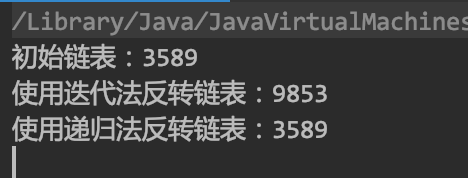算法题:实现链表的反转
提供了2种方法,迭代法、递归法。
(为了方便输出可视化,在自定义的ListNode中重写了toString方法。)
/**
* Created By --- on 2021/8/12
* 以下代码可以直接粘贴进编译器输出
*/
public class ReverseList {
public static void main(String[] args) {
ListNode head = new ListNode(3, new ListNode(5, new ListNode(8, new ListNode(9))));
System.out.println("初始链表:" + head);
ListNode newList = reverseList(head);
System.out.println("使用迭代法反转链表:" + newList);
ListNode newList2 = reverseList2(null, newList);
System.out.println("使用递归法反转链表:" + newList2);
}
/**
* 迭代法
*/
public static ListNode reverseList(ListNode head) {
ListNode pre = null;
ListNode cur = head;
ListNode tmp;
while (cur != null) {
tmp = cur.next;
cur.next = pre;
pre = cur;
cur = tmp;
}
return pre;
}
/**
* 递归法
*/
public static ListNode reverseList2(ListNode pre, ListNode cur) {
if (cur == null) {
return pre;
}
ListNode tmp = cur.next;
cur.next = pre;
pre = cur;
cur = tmp;
return reverseList2(pre, cur);
}
}
/**
* singly-linked list
*/
class ListNode {
int val;
ListNode next;
ListNode() {
}
ListNode(int val) {
this.val = val;
}
ListNode(int val, ListNode next) {
this.val = val;
this.next = next;
}
@Override
public String toString() {
StringBuilder sb = new StringBuilder(String.valueOf(val));
ListNode next = this.next;
while (next != null) {
sb.append(next.val);
next = next.next;
}
return sb.toString();
}
}输出结果:

?
?